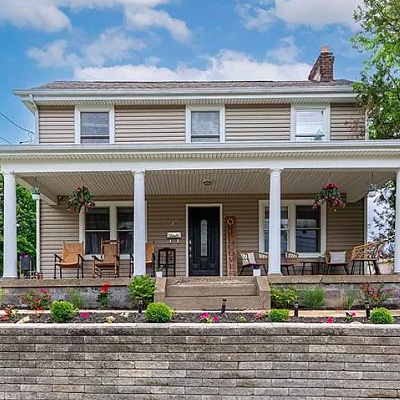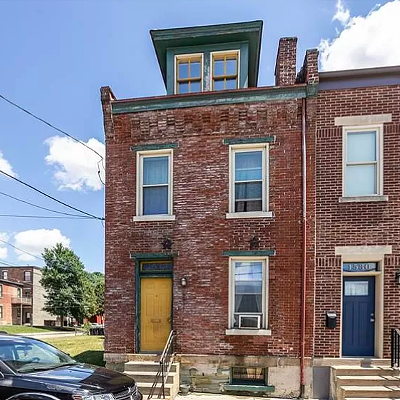Emo Phillips, one of the unjustly forgotten comic geniuses of the modern age, once told a joke about driving in New York City. He was on 47th Street and needed to get to 48th but couldn't figure out where to turn. Then he remembered Einstein's postulate that, due to the curvature of the space-time continuum, all parallel lines eventually meet. So he kept on driving.
That wouldn't work in New York City, but in Pittsburgh time and space aren't just bent: They're bent over backwards, as anyone who's ever been to a Tom Flaherty press conference knows.
Any number of theories might be advanced to explain this phenomenon: A Penguins franchise that sucks so badly it acts as a localized black hole, warping space around itself. The absence of anti-matter in a city ruled by just one political party. But the best explanation for Downtown's unique geometry lies in history.
Sure, it makes sense for cities to be laid out in an orderly grid, and early American towns were often organized in just such a "Philadelphia plan." In a way, so is Downtown Pittsburgh.
According to Bruce Buvinger's Origin, Development, and Persistence of Street Patterns in Pittsburgh, Pennsylvania -- the only book on record to study this highly controversial field -- a Col. John Campbell first laid out four blocks of Downtown along the Monongahela River in the mid-1760s. In 1795, George Woods and Thomas Vickroy expanded the street grid northward from the river shore. They laid out First through Eighth avenues -- although they were called "Streets" back then -- along with Market Square, Wood, Smithfield and Grant streets.
But there was a problem. Since two of the Golden Triangle's edges are formed by the rivers, a street grid that ran parallel and perpendicular to the Mon would eventually collide with the Allegheny, creating a lot of oddly angled dead-end streets.
But instead of leaving strangely angled streets to the edge of town, Woods and Vickroy moved them right to the center where they would cause the most inconvenience. They did so by creating a second grid to run alongside the Allegheny, with its own set of streets running parallel to that river instead. The two street grids collided at Liberty Avenue, forming intersections whose streets meet at roughly the same angles formed by the rivers. The results, as Buvinger put it, were "small triangular lots and uneven-sided polygons" at Liberty where "odd-shaped buildings are still commonplace." So are odd-shaped people, in my experience.
Buvinger calls this "an unexpected and unfortunate result," which is perhaps a bit charitable. How could the result be "unexpected" when any third-grader with a ruler and a protractor could see what was going to happen?
Either way, we're stuck with it. If you look at a street plan dating from 1795, the layout of Downtown has barely changed. The largest difference is that the city drained two block-long ponds and replaced them with a series of potholes scattered throughout the area. Again, very considerate of the city's early planners.
The other things that changed are the street names. Originally, the streets in the Allegheny grid had names like Marbury, Hay, Pitt, Irvine, Hand and St. Clair. But in 1868, the city had swallowed up several nearby townships (yeah, that's right, and we're coming for you next, McCandless!) and decided to rename all its streets to avoid the confusion of duplicate names.
Streets running perpendicular to the Allegheny were given numbers: You can still find 6th through 10th street Downtown, but the lower-numbered streets either disappeared with the construction of Point State Park or were simply lost to hyperspace. Just like Emo Phillips.
For some reason, while all the streets that had names were given numbers, the streets that had numbers to begin with were changed to "avenues": Thus, what Woods and Vickroy called Fifth Street became Fifth Avenue. If you think that's confusing now, imagine life back in the late 1860s. One month you had Sixth Street running into Irvine Street; the next month the same intersection was Sixth Avenue and Seventh Street.
My guess is that Pittsburgh grew rapidly in those days simply because people couldn't figure out how to leave. Conversely, of course, the more efficient our highways became, the faster people got out. Perhaps the problem with Pittsburgh is not that it's too hard to get around in, but that it's too easy. If we're serious about rescuing Downtown and the rest of Pittsburgh, maybe we should be trying to reinvent the basic postulates of geometry.
It couldn't work any worse than previous attempts by the Murphy administration to defy the laws of economics. We might even get Emo Philips back.










